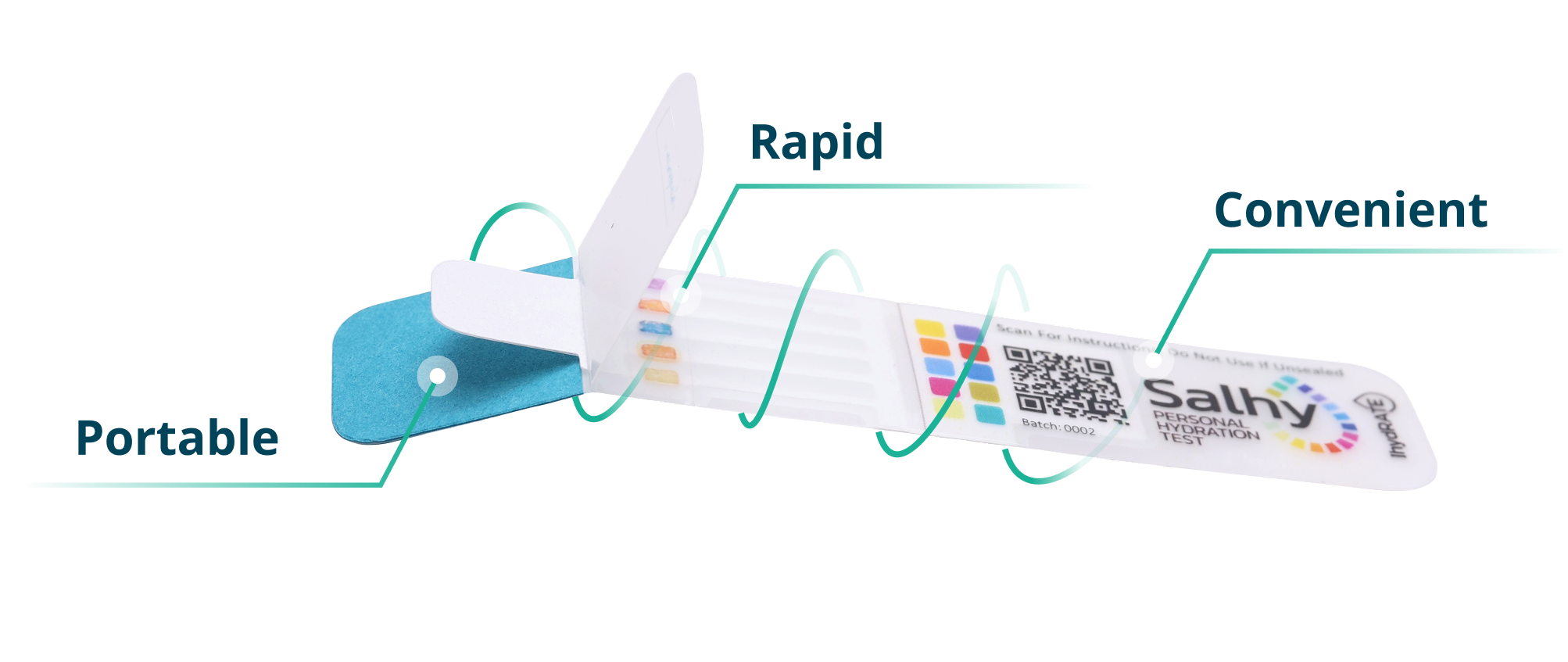Hydration Loss Can Impact Performance, Health & Safety
Whether you’re training hard or working in heat-stressed environments, hydration is a non-negotiable part of your safety and success
The Salhy hydration test is not a medical device and is not a substitute for professional medical advice. Salhy is a tool to support your personal hydration
Even a low level of fluid loss, just 1-2% of your total body hydration, can impact your performance Thirst often comes too late Feeling thirsty often occurs after dehydration has started to set in7
Cumulative Affect Mild dehydration can build up over time and go8
Big Impact Cognitive Decline1,2 Slower reaction times, reduced concentration and decision making Impaired short-term memory Higher Safety Risk3,4 Greater chance of accidents and injuries. Impaired coordination and motor control. Performance Drop5,6 Decreased strength, power & endurance. Increased fatigue and effort perception.
“Hydration isn’t optional – It’s critical to how you think, move and recover”
What’s at Stake? Slower Recovery Dehydration delays post-exercise or post shift recovery9 Strain on your body Impairs thermoregulation (cooling ability) Increases cardiovascular load Increases risk of heat-stress10 Quick Tips to Stay Hydrated Drink before, during and after activity or work
Don’t wait for thirst to hydrate
Use electrolyte solutions in hot or prolonged conditions
Use a hydration monitoring method, we recommend the Salhy test
Optimal hydration = better results, fewer mistakes
References Adan, A. (2012). Journal of the American College of Nutrition, 31(2), 71–78. Sawka, M.N., et al. (2007). Journal of the American College of Nutrition, 26(sup5), 575S–584S. Cheuvront, S.N., & Kenefick, R.W. (2014). Sports Medicine, 44(Suppl 1), S13–S21. NIOSH (2016). Criteria for a Recommended Standard: Occupational Exposure to Heat and Hot Environments. Wittbrodt, M.T., & Millard-Stafford, M. (2018). Nutrients, 10(12), 1975. Armstrong, L.E., et al. (2012). American Journal of Clinical Nutrition, 95(3), 726–731. Maughan, R.J., & Shirreffs, S.M. (2010). British Journal of Nutrition, 104(S1), S13–S19. Casa, D.J., et al. (2010). Journal of Athletic Training, 45(2), 147–158. Kenefick, R.W., & Sawka, M.N. (2007). Current Sports Medicine Reports, 6(4), 202–207. Ganio, M.S., et al. (2011). Nutrition Reviews, 69(11), 584–591. 



